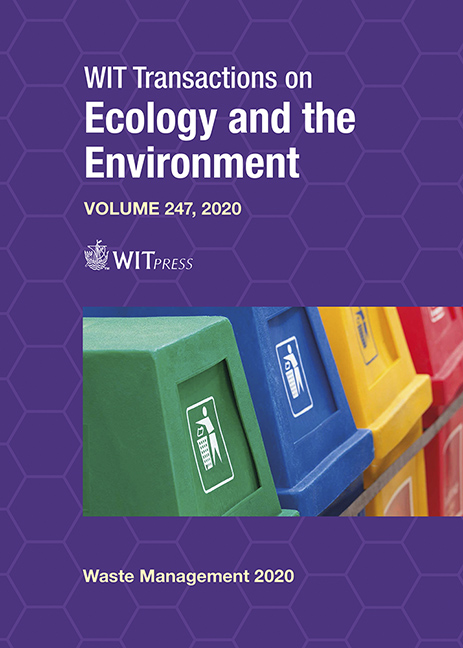COMPOUNDING AND PROCESSING HYDRO-BIODEGRADABLE PLASTIC FILMS FOR PLASTIC WASTE REDUCTION. PART II: THERMAL AND CHEMICAL PRINTING OF VIRGIN/WASTE POLYMERIC BLENDS
Price
Free (open access)
Transaction
Volume
247
Pages
12
Page Range
103 - 114
Published
2020
Paper DOI
10.2495/WM200101
Copyright
WIT Press
Author(s)
MASUMAH AL-QASSIMI, HAJAR JAWAD KARAM, MAJED HAMEED AL-WADI, SULTAN MAJED AL-SALEM
Abstract
In an effort to develop a biodegradable blend that could withstand arid environmental conditions; and standardise the use of biodegradable plastic films originating from hydro-biodegradable blends, this project was initiated by the Kuwait Institute for scientific Research. In this work, linear low-density polyethylene (LLDPE) was compounded with a 3 wt.% thermoplastic starch (TPS) resin and by the same amount with a pro-degradant chemical, using three different techniques that are standardised in the industry of plastics conversion. These are extrusion by single screw compounding, twin screw compounding and blown-filming machine as well. The materials were studied in comparison to the virgin LLDPE, as well as, formulated blends with plastic solid waste (PSW) materials, also in an effort to determine the impact such chemicals and pro-degradants have on the municipal solid waste (MSW) stream. Firstly, mechanical properties were studied using a universal testing machine by applying ASTM 882-12 and compared to other market grades available within localities. Furthermore, the thermogravimetric behaviour and infrared spectroscopy (IR) were established and have resulted in a clear shift within the onset and end set temperatures, in comparison to other commercial grades. This study establishes a baseline for compounds that could be used in the future as a biodegradable plastic film in an effort to combat plastic solid waste (PSW) accumulation in developing countries.
Keywords
biodegradation, polyester, starch, polymer waste, waste management





